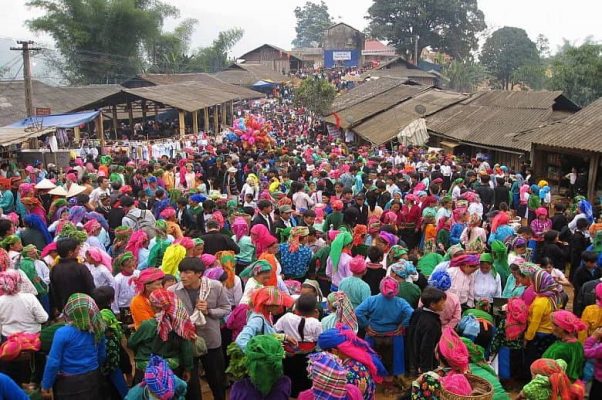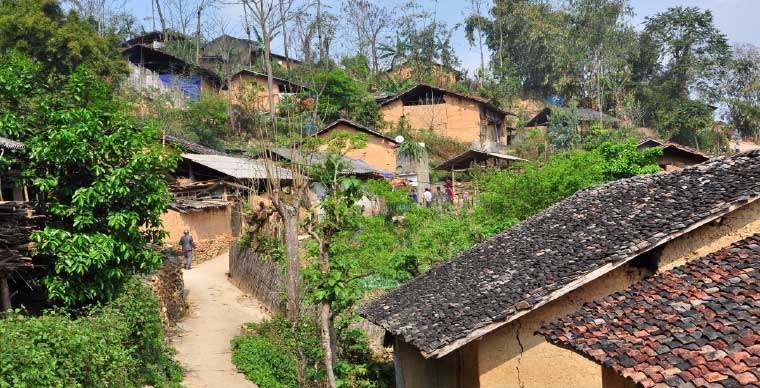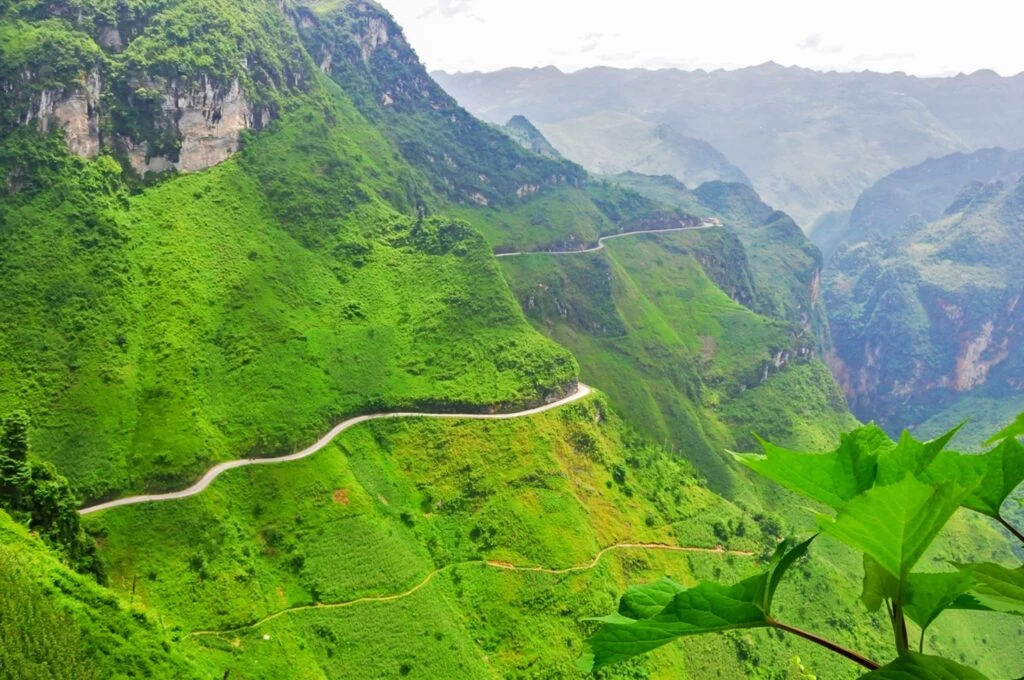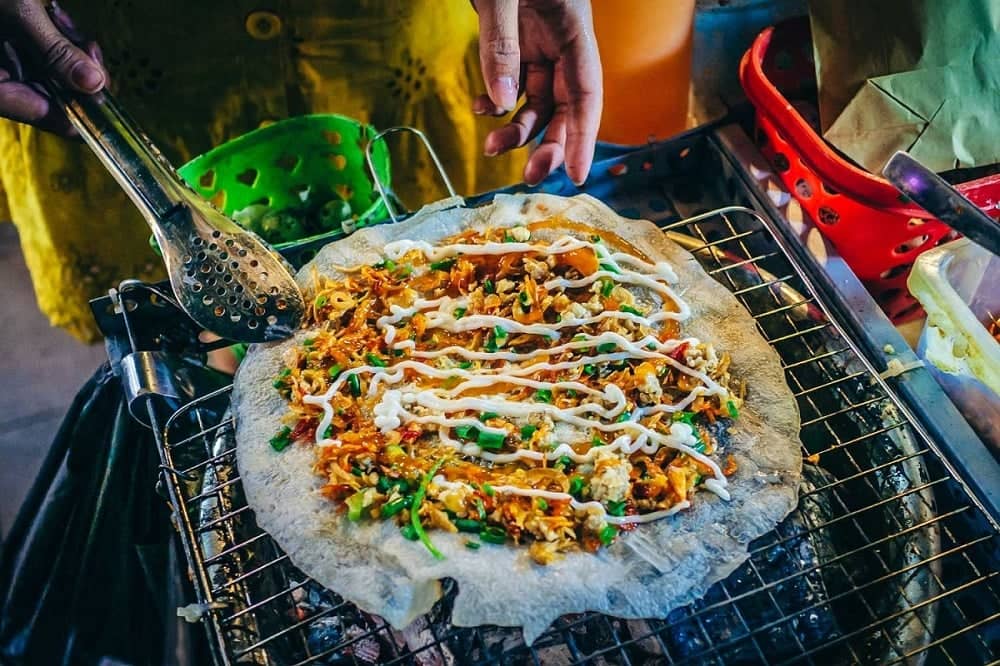
Unique features of national cultural identity in Ha Giang
Explore the vibrant tapestry of Ha Giang Culture in Vietnam, where ancient traditions come alive through colorful festivals, melodious ethnic music, and savory culinary treasures. Immerse yourself in the cultural heritage of this enchanting region, dotted with historic landmarks and breathtaking landscapes. Start planning your cultural odyssey through Ha Giang with Ula Travel today!
I. Introduction to Ha Giang Culture
1. Where is Ha Giang?

Location of Ha Giang
Ha Giang is situated in the northernmost region of Vietnam, bordering China to the north. It is a mountainous province known for its rugged terrain and stunning landscapes. Ha Giang covers an area of approximately 7,929 square kilometers and is part of the northeastern region of Vietnam.
The province is characterized by its high mountains, deep valleys, and winding rivers, with the Ma Pi Leng Pass being one of its most famous landmarks. The Dong Van Karst Plateau Geopark, recognized by UNESCO, is another notable feature, showcasing the unique geological and cultural heritage of the region.
2. Rich Cultural Heritage of Ha Giang

Ethnic diversity creates many colors for Ha Giang culture
Ha Giang is home to a rich tapestry of ethnic diversity, with more than 20 distinct ethnic groups living in harmony. The most prominent ethnic groups include the Hmong, Dao, Tay, Nung, Lo Lo, Pu Peo, La Chi, and Co Lao. Each group has its own unique language, traditional costumes, festivals, and customs.
This diversity is reflected in the province’s vibrant cultural landscape, where visitors can experience a wide range of cultural practices and communal activities. From the intricate brocade weaving of the Dao people to the lively khèn (bamboo pipe) dances of the Hmong, Ha Giang offers a deep dive into the traditions and lifestyles of Vietnam’s ethnic minorities.
This cultural richness is celebrated through various festivals and events, which provide a glimpse into the lives and values of these communities. Festivals such as the Khèn Mông Festival and the Khau Vai Love Market are not only tourist attractions but also vital components of the social fabric, preserving and promoting the cultural heritage of Ha Giang’s people.
By exploring Ha Giang, visitors can gain a profound appreciation for the historical and cultural depth of this unique region, contributing to a greater understanding of Vietnam’s diverse cultural heritage.
II. The Ethnic Culture of Ha Giang
1. Minority Ethnic Groups in Ha Giang
Ha Giang is home to a rich tapestry of ethnic groups, each contributing to the region’s unique cultural identity. The most prominent groups include the H’Mong, Dao, Tay, Nung, Lo Lo, Pu Peo, La Chi, and Co Lao. Each of these ethnicities brings distinct traditions, languages, and customs that define the cultural landscape of Ha Giang.

H’mong ethnic group in Ha Giang
- H’Mong: The H’Mong people are one of the largest ethnic groups in Ha Giang. They are known for their vibrant traditional clothing, which includes elaborately embroidered skirts, aprons, and colorful headpieces. The H’Mong language is part of the Hmong-Mien language family. The H’Mong are renowned for their agricultural skills, particularly in growing maize on steep mountain slopes. Their traditional customs include the celebration of the Lunar New Year and various rites of passage.

Dao ethnic group in Ha Giang
- Dao: The Dao people, also known as the Yao, are famous for their distinctive red turbans and intricate silver jewelry. The Dao language belongs to the Hmong-Mien family. They practice slash-and-burn agriculture and are skilled in herbal medicine. Dao customs are deeply spiritual, with rituals to honor ancestors and nature spirits. Notable festivals include the Tet Nhay (Jumping Festival), which involves dancing and singing to invoke blessings.

The beauty of the traditional costumes of the Tay ethnic group
- Tay: The Tay people, who speak a language from the Tai-Kadai family, are recognized for their stilt houses and traditional folk songs called “Then” singing. Their clothing is simpler, typically consisting of indigo-dyed garments. The Tay practice wet rice cultivation and have a rich tradition of folklore and legends. Their cultural practices include the Long Tong (Field Work) Festival, which is a prayer for good harvests.

Nung ethnic group with festivals
- Nung: Similar to the Tay, the Nung people speak a Tai-Kadai language and live in stilt houses. They are known for their beautiful brocade weaving and colorful costumes, especially during festivals. The Nung culture is centered around agriculture, and they celebrate various agricultural festivals, such as the Long Tong Festival.

The vibrant colors of the Lo Lo ethnic group
- Lo Lo: The Lo Lo people are distinguished by their elaborate and colorful traditional attire, often adorned with intricate embroidery and silver ornaments. Their language is part of the Tibeto-Burman family. The Lo Lo are known for their unique drumming rituals, which are an essential part of their spiritual life. They celebrate the Lunar New Year and other traditional ceremonies with great fervor.
Learn more about: Lo Lo Chai Village
2. Ha Giang Traditional Festivals
Ethnic groups in Ha Giang celebrate a variety of traditional festivals that reflect their rich cultural heritage. These festivals are vibrant and colorful, offering unique insights into the customs and traditions of the local people.

Many special activities in Ha Giang Mong Khen Festival
- Khen Mong Festival: This festival celebrates the H’Mong people’s musical heritage, particularly the Khen, a traditional bamboo pipe instrument. During the festival, H’Mong men perform intricate dances and music with the Khen, showcasing their skill and cultural pride. The festival is also a time for socializing and matchmaking among young people.

Gau Tao Festival
- Gau Tao Festival: A significant festival for the H’Mong people, Gau Tao is held to pray for good health, prosperity, and happiness. The festival involves various activities, including traditional games, singing, and dancing. It is also an occasion to honor ancestors and deities with rituals conducted by shamans.

Khau Vai Love Market
- Khau Vai Love Market: This unique festival is held annually in Khau Vai commune. It is a traditional event where people from different ethnic groups come to find their former lovers and renew friendships. The Love Market is a vibrant gathering featuring traditional music, dances, and the exchange of local goods and foods. It is a fascinating cultural event that highlights the romantic and social aspects of the local communities.
- Other Festivals: Each ethnic group in Ha Giang has its own distinctive festivals. For example, the Tet Nhay (Jumping Festival) of the Dao people, the Long Tong Festival of the Tay and Nung, and the Fire Dancing Festival of the La Chi. These festivals often involve traditional rituals, music, dance, and communal feasting, providing a deep insight into the spiritual and social lives of the ethnic groups.
These festivals and cultural practices not only enrich the lives of the local people but also offer a captivating experience for visitors, making Ha Giang a unique destination for cultural tourism.
III. Traditional Arts and Handicrafts in Ha Giang Culture
1. Handcrafted Products
Ha Giang is renowned for its exquisite handcrafted products, which reflect the rich cultural heritage and skilled craftsmanship of its ethnic communities. The traditional arts and handicrafts in Ha Giang include:
Weaving and Textile Production

Traditional Hmong weaving
- Brocade Weaving: Brocade weaving is a prominent craft among the H’Mong and Dao ethnic groups. The intricate patterns and vibrant colors are achieved using natural dyes and traditional looms. Brocade fabrics are often used to make traditional costumes, bags, and accessories.
- Indigo Dyeing: The Tay and Nung people are known for their indigo-dyed fabrics. Indigo dyeing involves extracting dye from indigo plants and dyeing cotton or hemp fabrics to create deep blue hues. These fabrics are then used to make clothing, scarves, and home decor items.
Embroidery

Lo Lo ethnic women develop traditional embroidery
- Traditional Embroidery: The women of Ha Giang’s ethnic groups are skilled in embroidery, creating elaborate designs on clothing, accessories, and household items. The H’Mong and Dao groups, in particular, are known for their detailed embroidery, which often features geometric patterns and motifs inspired by nature.
- Silk Embroidery: Some ethnic groups also engage in silk embroidery, producing delicate and intricate designs on silk fabrics. These embroidered pieces are highly valued for their beauty and craftsmanship.
Silver Crafting

Ha Giang preserves the essence of H’Mong silver carving craft
- Jewelry Making: Silver jewelry is a significant part of the traditional attire of many ethnic groups in Ha Giang. Skilled silversmiths create intricate pieces such as necklaces, bracelets, earrings, and hairpins. The designs often incorporate traditional symbols and motifs, reflecting the cultural heritage of the wearers.
- Ornamental Items: Besides jewelry, silver crafting also includes the creation of ornamental items such as belt buckles, buttons, and other decorative pieces. These items are not only beautiful but also serve as cultural symbols and heirlooms.
Start your journey with: Ha Giang Tour Package 5D4N
2. Traditional Craft Villages in Ha Giang
Ha Giang is home to several traditional craft villages where visitors can witness the creation of these handicrafts and even participate in the process. Some notable craft villages and their products include:
Lung Tam Village (Quan Ba District)

Lung Tam Village-Traditional Hmong weaving turns flax into fabric
- Brocade Weaving: Lung Tam is famous for its brocade weaving, with many households engaged in this traditional craft. Visitors can see the entire process, from spinning the thread to weaving the fabric on traditional looms.
- Handmade Textiles: The village produces a variety of handmade textiles, including shawls, bags, and garments. These products are known for their vibrant colors and intricate patterns.
Pho Cao Village (Dong Van District)

Pho Cao Village
- Embroidery and Weaving: Pho Cao is known for its embroidery and weaving, particularly among the H’Mong community. The village produces beautifully embroidered clothing and accessories, showcasing the unique designs of the H’Mong people.
- Traditional Costumes: The village is also a great place to purchase traditional H’Mong costumes, which are adorned with elaborate embroidery and silver ornaments.
Thanh Van Village (Quan Ba District)
- Silver Crafting: Thanh Van is renowned for its silver crafting, with many skilled silversmiths creating intricate jewelry and ornamental items. Visitors can watch the artisans at work and purchase unique silver pieces directly from the craftsmen.
Lao Xa Village (Dong Van District)

The family has been working in silver carving for 7 generations in Lao Xa Village
- Traditional H’Mong Silverwork: Lao Xa is another village known for its traditional H’Mong silverwork. The village’s artisans create beautiful silver jewelry and decorative items, which are popular among both locals and tourists.
IV. Distinctive Features of Ha Giang Cuisine
Ha Giang cuisine reflects the region’s diverse cultural influences and abundant natural resources. Here are some key characteristics that make it unique:
Use of Local Ingredients: Ha Giang’s mountainous terrain provides an abundance of fresh produce, herbs, and meats, which form the basis of its cuisine. Staple ingredients include corn, buckwheat, rice, and a variety of vegetables grown in the region’s fertile valleys.
Flavorful and Aromatic Dishes: Ha Giang cuisine is known for its bold and aromatic flavors, often achieved through the skillful use of herbs, spices, and fermented ingredients. Dishes are typically seasoned with local herbs such as dill, mint, and coriander, which impart a refreshing aroma and distinct taste.
Unique Cooking Techniques: Traditional cooking methods such as grilling, steaming, and stir-frying are prevalent in Ha Giang cuisine. Indigenous cooking techniques, such as using bamboo tubes to steam rice or grilling meats over open flames, add depth and character to the dishes.
Cultural Significance: Ha Giang cuisine reflects the region’s cultural diversity, with influences from various ethnic groups such as the H’Mong, Dao, and Tay. Meals are often communal affairs, bringing together family and friends to share in the enjoyment of food and celebrate cultural traditions.
V. Prominent Cultural Destinations
1. Cultural Villages and Hamlets
Lung Cu Cultural Village

Lung Cu Cultural Village
- Located in Lung Cu Commune, Dong Van District, Lung Cu Cultural Village is nestled at the northernmost tip of Vietnam.
- Cultural Significance: Known for its rich heritage of the H’Mong ethnic group, the village offers visitors a glimpse into the traditional lifestyle, customs, and rituals of the H’Mong people.
- Attractions: Traditional H’Mong houses, vibrant markets selling handmade crafts and textiles, and opportunities for cultural exchanges with local residents.
Dong Van Cultural Village

Dong Van Cultural Village
- Situated in Dong Van Town, Dong Van District, Dong Van Cultural Village is renowned for its preservation of the unique cultural identity of the Tay and H’Mong ethnic groups.
- Cultural Significance: The village showcases traditional architecture, agricultural practices, and handicrafts, reflecting the resilience and creativity of its inhabitants.
- Attractions: Dong Van Old Quarter, a UNESCO-recognized geopark with stunning geological formations, and local workshops producing intricate brocade textiles.
More details: Ha Giang to Cao Bang Tour
2. Historical Sites and Landmarks in Ha Giang
Dong Van Old Quarter

Dong Van Old Quarter
- The Dong Van Old Quarter is a charming area in Dong Van Town, characterized by well-preserved French colonial buildings and narrow cobblestone streets.
- Historical Significance: Dating back to the late 19th century, the quarter served as a trading hub for merchants from different ethnic groups, contributing to its diverse cultural heritage.
- Attractions: French-style villas, ancient pagodas, and bustling markets offering traditional handicrafts and local delicacies.
Dong Van Karst Plateau Geopark

Dong Van Karst Plateau Geopark
- Encompassing Dong Van District and adjacent areas, the Dong Van Karst Plateau Geopark is a UNESCO Global Geopark renowned for its spectacular limestone landscapes.
- Cultural and Geological Significance: The geopark not only boasts breathtaking scenery but also showcases the cultural diversity of its indigenous communities, including the H’Mong, Tay, and Dao ethnic groups.
- Attractions: Ma Pi Leng Pass, the “King of Passes,” offering panoramic views of the karst plateau, ancient rock formations, and ethnic minority villages dotting the landscape.
Lung Cu Flag Tower

Lung Cu Flag Tower
- Perched atop Lung Cu Peak in Lung Cu Commune, the Lung Cu Flag Tower is a symbol of Vietnamese sovereignty and national pride.
- Historical and Symbolic Significance: The tower marks the northernmost point of Vietnam and is adorned with the national flag, serving as a reminder of the country’s territorial integrity and cultural heritage.
- Attractions: Panoramic views of the surrounding mountains and valleys, as well as opportunities for trekking and photography.
VI. Travel Tips to Experience Ha Giang Culture
1. Routes and Transportation to Ha Giang
Ha Giang can be reached by road from Hanoi, which takes approximately 6–8 hours, depending on traffic and weather conditions. The route offers stunning landscapes, winding mountain roads, and picturesque villages.
Alternatively, travelers can opt for a more adventurous journey by motorbike, which allows for greater flexibility in exploring the region’s remote areas. However, road conditions can be challenging, especially during the rainy season.
2. Best Time to Visit Ha Giang
The best time to visit Ha Giang is from September to November, when the weather is cool and dry and the rice terraces are at their most vibrant green. Avoid the rainy season from June to August, as landslides and flooding can occur, making travel difficult.
3. Accommodation and Dining
Ha Giang accommodation has many options to suit every budget, from guesthouses and homestays to luxury resorts. For an authentic experience, consider staying with local families in homestays, where you can immerse yourself in the daily life and culture of the region.
When it comes to dining, Ha Giang boasts a diverse culinary scene, with restaurants serving up delicious local specialties such as thắng cố (horse meat hotpot), black chicken hotpot, and sour pho. Be sure to also try street food stalls for a taste of authentic Ha Giang cuisine.
In conclusion, Ha Giang Cultural is a testament to the resilience, diversity, and beauty of Vietnam’s northern highlands. With its rich tapestry of ethnic traditions, vibrant festivals, and breathtaking scenery, Ha Giang offers travelers a truly immersive cultural experience like no other.
See more: Vietnam Travel Tips




























